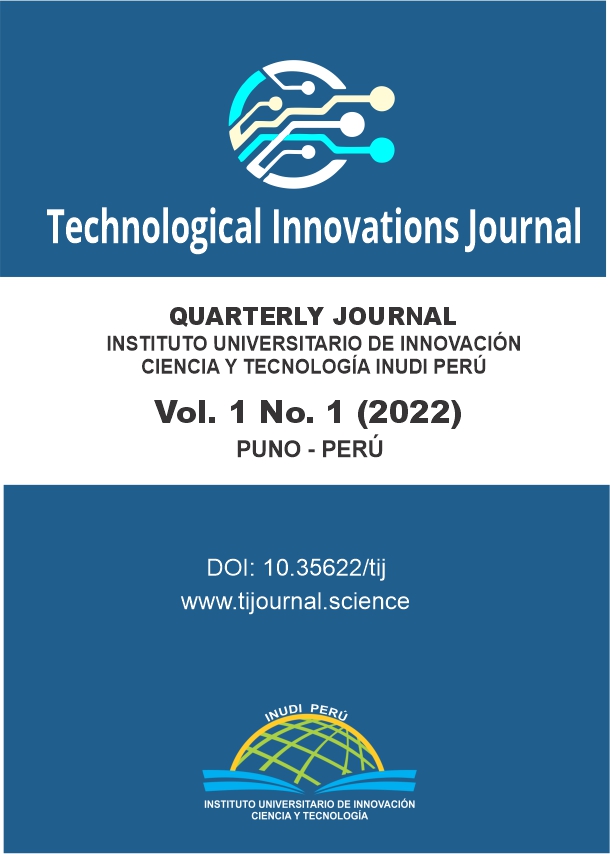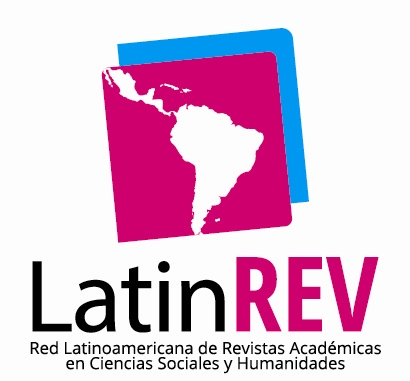Optimization of the flotation process for the recovery of a gold pre-concentrate in sulphide minerals
DOI:
https://doi.org/10.35622/j.ti.2022.01.002Keywords:
concentrate, flotation, gold, optimization, sulphide oreAbstract
The objective of this research was to optimize the recovery of a gold pre-concentrate from the sulphide minerals in the flotation process, determining the parameters of percentage of solids, dosage of reagents and flotation time. of tests according to a statistical experimental design the 23-factorial design for 3 factors or variables at two levels, with 11 runs, including 3 central points, for the performance of each of the experiments. During the procedure, a sulphide mineral containing pyrite (FeS2), chalcopyrite (FeCuS2), blende or sphalerite (ZnS), galena (PbS) has been worked on. With an average grade of head (gold) of 10g/MT. For the grinding stage, the mineral has been ground to a granulometry of 65% -200 mesh. Therefore, it was also determined that the optimal grinding time for 65% -200 mesh is 21.65 minutes. It is concluded that it is possible to optimize the flotation process with a recovery of 76.96% compared to what is worked in the plant with a recovery of 70.08%, the test that has given the best results is test No. obtain a grade of 58.45 g/MT of gold in the concentrate and 2.59 g/MT of gold in the tailings; and a recovery of 76.96% of gold, in turn to obtain this recovery the solid % is 35%, collector A-238 of 50g/MT, flotation time 10 minutes. It has been determined that the most important variables that affect the process are: % of solids and dosage of the Aerofloat-238 collector.
References
Astucuri, T. & Venancio. (1999). Introducción a la flotación de minerales. Revista del Instituto de Investigaciones – F.G.M.M.C.G – UNMSM. 2 (3), 69 – 83.
Azañero, A. (1999). Evaluación de reactivos de flotación. Revista del Instituto de Investigación de la F.G.M.M.C.G.–UNMSM. 2 (4), 77-93.
Ballester, A. (2000). Metalurgia Extractiva. Editorial Síntesis, S.A. Madrid-España.
Bueno, H. (2003). Procesamiento de Minerales. Impreso en Jauja–Perú.
Castro, S. (1983). Curso Panamericano de Metalurgia Extractiva, Programa Regional de la OEA, Departamento de Ingeniera Metalúrgica Universidad de Concepción, Fundamentos Físico Químicos de la Flotación.
Douglas, C. (1992). Diseño y Análisis de Experimentos. Editorial Iberoamérica, Capítulos 9, 10, 11. Páginas 270, 319 y 335.
Gutiérrez, H. (2004). Análisis y Diseño de Experimentos. Editorial Caz prensa Digital, S.A. México.
Jiménez, J. (2001). Tratamiento de minerales sulfurados de Cobre aurífero del yacimiento Patacancha Por flotación. Cusco
Louis, J. (2007). Fundamentos De La Flotación. Universidad de los Andes- Venezuela
Loza, M. (2009). Concentración por el método de flotación por espumas del mineral sulfurado de Cobre- Molibdeno del proyecto las Bambas. Cusco
Mc Donald, E. (1983). Alluvial mining. Chapman & Hall, London. DOI: https://doi.org/10.1007/978-94-017-5361-6
Ojeda, M. & Reyes, J. (2006). Recuperación de metales preciosos provenientes de presa de jales. Instituto de Metalurgia, Universidad Autónoma de San Luis Potosí San Luis Potosí, S.L.P., México.
Quiroz, I. (1998). Flotaciones diferenciales de sulfuros. UNI
Tobón, C. (2013). Estudio de la Hidrofobicidad de Oro Nativo y su Efecto en la Flotación Espumante Directa. Universidad Nacional de Colombia, Facultad de Minas, Departamento de Materiales Medellín.
Vargas, J. (1995). Metalurgia del oro y la plata. Editorial San Marcos. Lima.
Villachica, C. (1985). Flotación de menas polimetálicas. Curso de flotación - UNI
Xstrata Copper. (2007). Flotación de Minerales – Manual De Procedimientos. División Xstrata – Tegnology.
Published
Issue
Section
License
Copyright (c) 2022 Juan Suca, Gregorio Palomino (Autor/a)

This work is licensed under a Creative Commons Attribution 4.0 International License.











